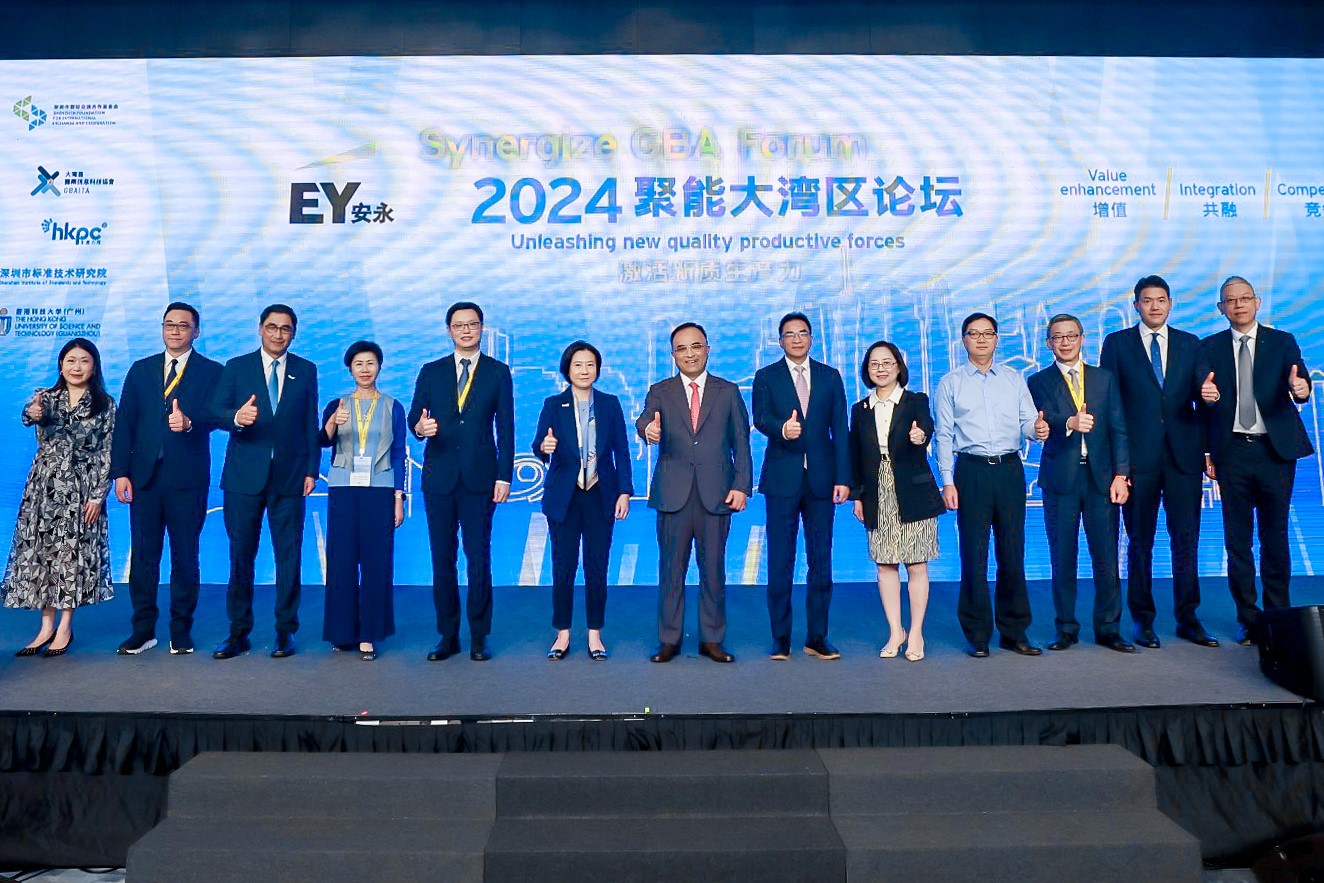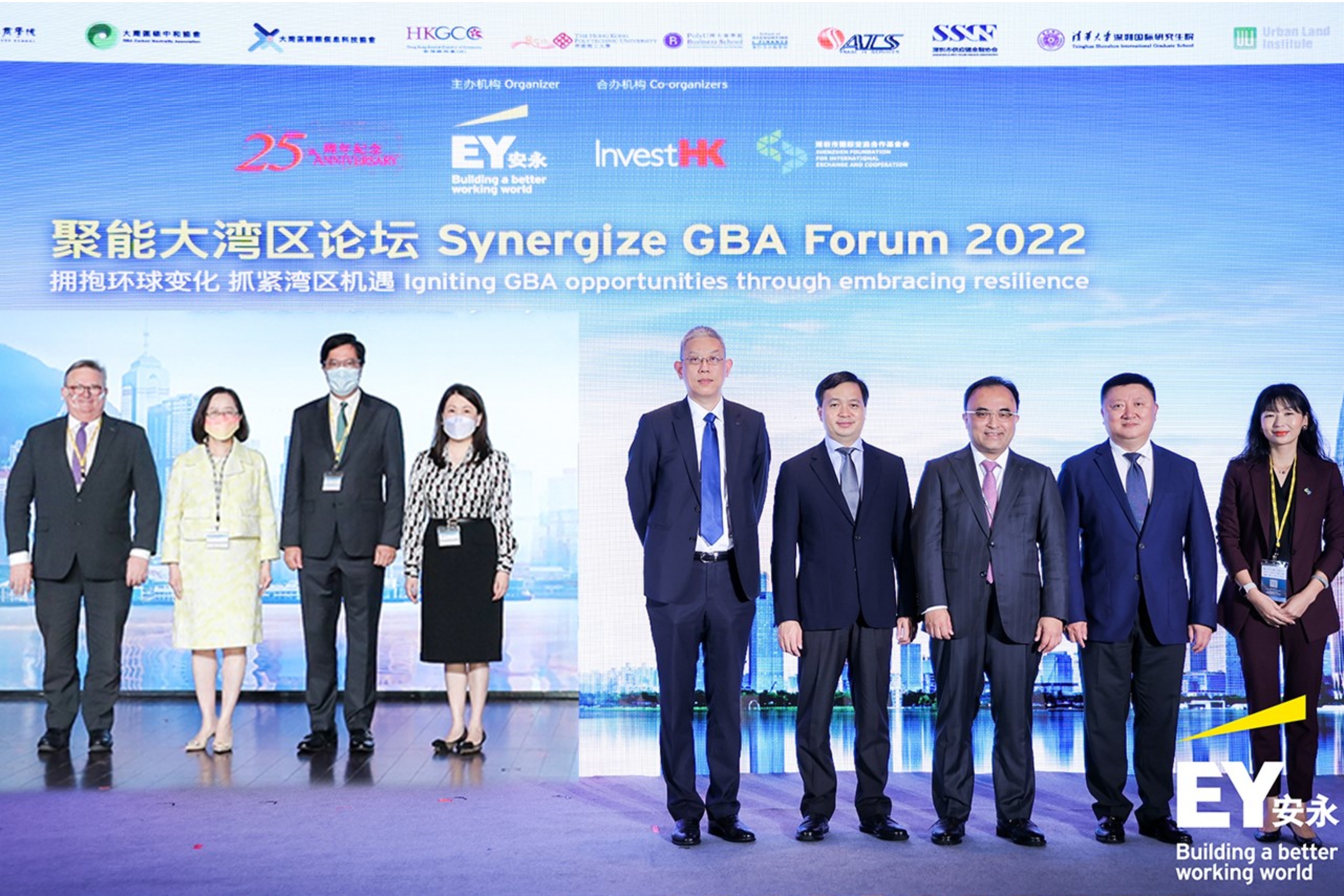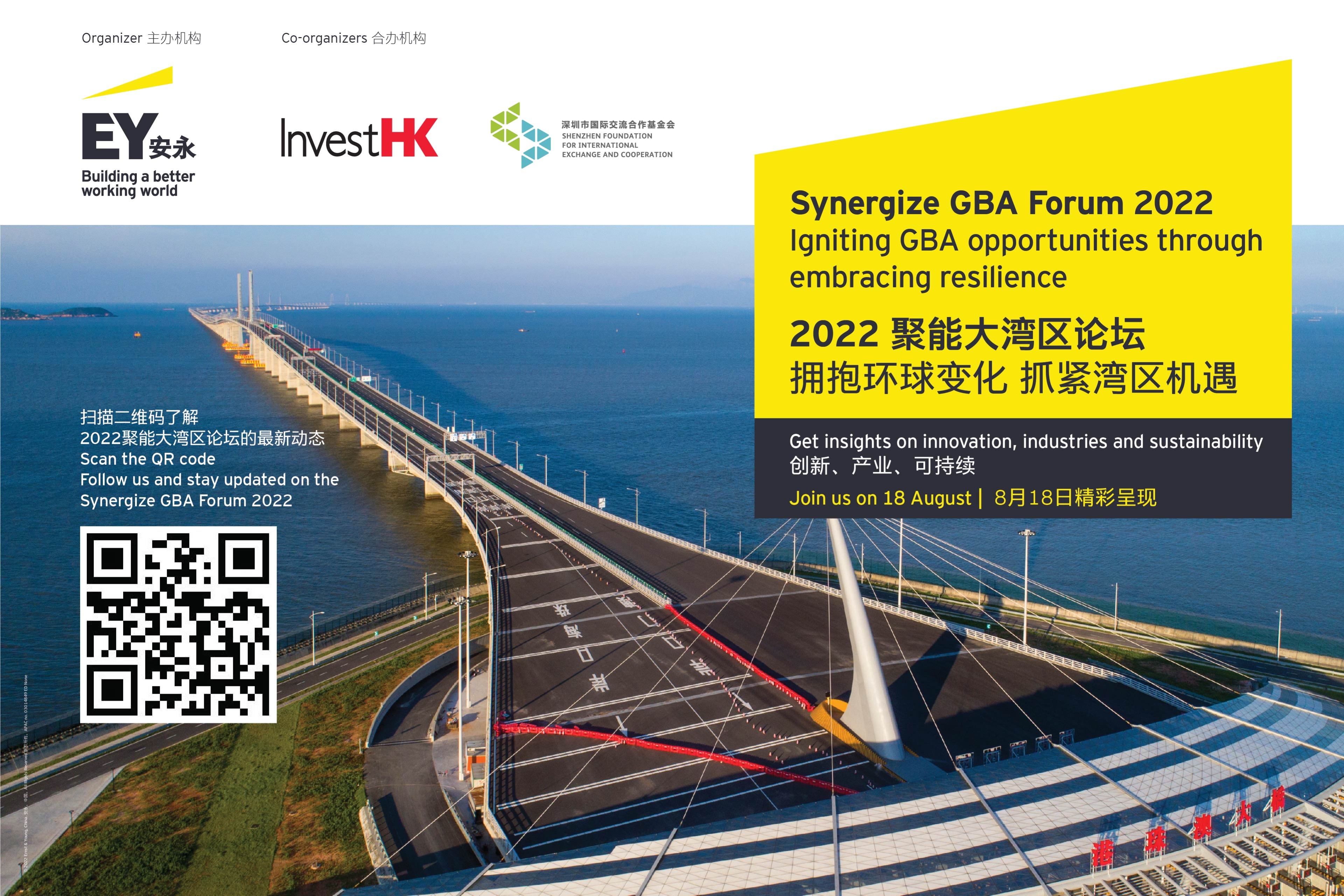EY refers to the global organization, and may refer to one or more, of the member firms of Ernst & Young Global Limited, each of which is a separate legal entity. Ernst & Young Global Limited, a UK company limited by guarantee, does not provide services to clients.
- About 44% of the interviewed companies adopted at least one prop-tech solution; with asset and portfolio management tools as a mainstream application
- 36% of the interviewed companies regarded efficiency improvement and cost reduction the main reasons for adopting prop-tech despite several hindrances
- 71% of the interviewed property companies indicated that integration of new and legacy systems is a major challenge
Ernst & Young Transactions Limited (EY) and the Urban Land Institute (ULI) have co-developed the GBA prop-tech white paper (the white paper) around the theme of technology innovation and digital transformation of the real estate industry in the Guangdong-Hong Kong-Macau Greater Bay Area (GBA). This white paper addresses the current status and future opportunities of the prop-tech industry in the GBA. With a hope to inform traditional real estate participants in their efforts to meet the needs of the inventory era by undergoing digital transformation.
The study has a wide coverage of industry sectors, including investment and finance professionals, real estate developers, leading technology companies and start-ups, urban planning companies, consultants, government bodies and non-profit organizations. The diversity of the respondents’ background imparts a broad spectrum of views and richness of experience in the white paper.
The real estate industry is facing both challenges and business opportunities
Under the dual pressures of the mainland China’s tightening housing policy and rising operation costs, real estate enterprises must break new ground for growth, entailing new approaches in management and operation. Meanwhile, demands from epidemic control, remote work and the overall trends in data integration have catalyzed the rapid growth of prop-tech. This new normal has given the impetus for enterprises to undergo digital transformation.
The GBA comprises the core cities of Hong Kong, Shenzhen and Guangzhou. It is one of the most developed areas in mainland China, with established experience in leveraging development of the real estate industry to boost domestic demand. The rapid development of the real estate industry has resulted in large inventory. At present, the GBA is 70% urbanized and is ready for more construction projects. Under China’s “dual carbon” policy, it is imperative to reduce the carbon emissions resulting from future construction in response to the call for sustainable development in the GBA. The sustainable development is becoming a key external driver for industrial transformation. As such, the management of existing inventory and improvement of sustainability have become an industry-wide concern.
Harvey Coe, Senior Advisor, Hong Kong, EY, said that the GBA is envisioned to drive technology and innovation. Where new ideas emerge and technology develops, the GBA presents tremendous potential for the real estate sector with the increasing applicability of artificial intelligence (AI), internet of things (IoT), blockchain and other emerging technologies.
Prop-tech has become a hot topic within corporate management
79% of the surveyed companies stated that prop-tech is of high strategic importance to them, with 88% of the interviewed top management replying that prop-tech is pivotal. Horizontal analysis of the survey results has yielded the conclusion that, the more advanced a given company is in the use of prop-tech, the more pronounced role its senior management has in leading and driving such transformation.
Nearly half of the surveyed companies have adopted at least one type of prop-tech
About 44% of the surveyed companies have adopted at least one prop-tech solution, with the main application areas consist of asset and portfolio management tools. About 23% are in the early stage of evaluating or piloting solutions. Technological tools and solutions are gaining widespread industry acceptance but have not yet transitioned from early adoption to full incorporation by the market.
In respect of the main technology application areas among the GBA corporates, 60% of the interviewed companies have applied management tools, a reflection of the crucial role of technology in automating internal processes and optimizing asset and portfolio management. However, construction and building management are slightly behind, with only 39% and 38% of the surveyed companies having implemented the technology solutions, the penetration rate of technology remains insufficient, showing that enterprises are not yet fully committed.
Survey results show that more than 50% of the interviewed companies adopted point solutions to address the pain points identified as the way they implement prop-tech. Moreover, about 23% of companies develop in-house technology solutions to address the needs and capture trending markets. Possible reasons for these companies to develop in-house technology solutions includes meeting enterprises’ customization needs, the companies’ senior technical staff are driving more advanced technology solutions and deploying new business segments to capture opportunity.
Integration of legacy and new systems and talent shortages are the main implementation challenges
Chris Chan, Partner, Strategy & Transactions, Greater Bay Area, EY, said that 36% of the interviewed companies have adopted prop-tech strategy to improved operational efficiency and reduce costs. However, there are hindrances in the actual implementation. 34% of the interviewees highlighted the challenges associated with system integration, 27% of them said they lack in-house talent, 22% of them said prop-tech strategy is not of the highest priority among all corporate strategies, and 14% of them reported that existing corporate culture is not open to change.
71% of the interviewed real estate companies indicated that the integration of new and legacy systems, such as the significant changes to IT or business processes to implement new technologies, is a major challenge results from the lack of clear industry standards and integrated products in the market.
Regarding the demands for real estate technology talent, leaders of the interviewed enterprises expect more interdisciplinary talent with business, technology and project management backgrounds to participate in the industry transformation.
“Information and cybersecurity” and “data management" are most valued by enterprises in the GBA
About 85% of the surveyed companies indicated that information and cybersecurity are crucial in prop-tech applications, while 78% of them consider data management capabilities to be of high importance. However, based on the self-assessment of organizational competencies and competitiveness, only about 40% (information and cybersecurity) and 30% (data management) of the interviewed companies believe that their organizational competencies are higher than the industry average. This shows that, in the process of digital transformation, enterprises in the GBA must look to enhance their soft capabilities and technical infrastructure in order to ensure a successful implementation of prop-tech.
AI, big data and 5G will continue to impact the real estate revolution in the upcoming five years
The majority of the interviewed companies expect that AI, big data analytics and 5G will significantly impact the real estate industry in the next five years. As there is a rising trend in the prop-tech investment market in the region, AI and big data analytics have been the leading investments in recent years. Particularly in AI technologies, there has been a sustained acceleration in investments over the past three years.
Most companies expect to utilize prop-tech to further improve operational efficiency and optimize business decisions
The surveyed companies express an upbeat attitude towards the impact of technology on the real estate industry. About 46% of them expect emerging technologies to further improve operational efficiency, thereby raising the effectiveness of asset management. About 22% of them agree that big data would enable more insightful business decisions through extensive market intelligence and user behavior analytics.
James Wong Jr., Chair, Urban Land Institute Greater Bay Area Sub-committee, said that apart from the market circumstances, there are nine key organizational capabilities that affect digital transformation and technology innovation of enterprises, namely prop-tech leadership, open culture, innovative corporate management, agile development, data management, advanced data analytics, information and cybersecurity, availability of emerging technology and external alliances. Enterprises need to improve these organizational capabilities to get internal support for digital transformation.
The white paper made four recommendations in driving the development and application of prop-tech, which included the development of a systematic digital innovation strategy, reshaping operating model to complement the innovation strategy, the establishment of a broad technology partnership ecosystem and investing in the future to capture early market opportunities.
-Ends-
Notes to Editors
EY | Building a better working world
EY exists to build a better working world, helping to create long-term value for clients, people and society and build trust in the capital markets.
Enabled by data and technology, diverse EY teams in over 150 countries provide trust through assurance and help clients grow, transform and operate.
Working across assurance, consulting, law, strategy, tax and transactions, EY teams ask better questions to find new answers for the complex issues facing our world today.
EY refers to the global organization, and may refer to one or more, of the member firms of Ernst & Young Global Limited, each of which is a separate legal entity. Ernst & Young Global Limited, a UK company limited by guarantee, does not provide services to clients, nor does it own or control any member firm or act as the headquarters of any member firm. Information about how EY collects and uses personal data and a description of the rights individuals have under data protection legislation are available via ey.com/privacy. EY member firms do not practice law where prohibited by local laws. For more information about our organization, please visit ey.com.
About the Urban Land Institute (ULI)
The Urban Land Institute (ULI) is a non-profit education and research institute supported by its members. Its mission is to shape the future of the built environment for transformative impact in communities worldwide. Established in 1936, the Institute has more than 45,000 members worldwide representing all aspects of land use and development disciplines. For more information on ULI, please visit uli.org or follow us on Twitter, Facebook, LinkedIn and Instagram.
ULI has more than 2,600 members in the Asia Pacific region. For more information on ULI Asia Pacific, visit asia.uli.org or follow us on Facebook, Instagram, LinkedIn and Twitter.
This news release has been issued by EY China practice, a part of the EY global network.
Related news
EY and ULI co-launch GBA prop-tech white paper
HONG KONG, 8 SEPTEMBER 2022 — Ernst & Young Transactions Limited (EY) and the Urban Land Institute (ULI) have co-developed the “GBA prop-tech white paper” (the white paper) around the theme of technology innovation and digital transformation of the real estate industry in the Guangdong-Hong Kong-Macau Greater Bay Area (GBA). This white paper addresses the current status and future opportunities of the prop-tech industry in the GBA.
HONG KONG, 16 AUGUST 2024 — The EY Synergize GBA Forum 2024 (the Forum), organized by EY Greater China Region (EY) in collaboration with Invest Hong Kong (InvestHK) of the Hong Kong Special Administrative Region (HKSAR) Government, Our Hong Kong Foundation (OHKF) and the Shenzhen Foundation for International Exchange and Cooperation (SFIEC), concluded today in Hong Kong.
EY Synergize GBA Forum inspires with thought leaders and distinguished speakers
HONG KONG, 18 AUGUST 2022 — The EY Synergize GBA Forum 2022 (the Forum), organized by EY Greater China Region (EY) and co-organized by Invest Hong Kong – a department of the Government of Hong Kong Special Administrative Region (HKSAR) – and the Shenzhen Foundation for International Exchange and Cooperation (SFIEC), has concluded successfully today in Hong Kong and Shenzhen.
EY joins forces with InvestHK and SFIEC to host Synergize GBA Forum 2022
HONG KONG, 18 JULY 2022 — EY Greater China Region (EY) today announced that the second EY Synergize GBA Forum will be held on 18 August 2022 (Thursday). EY is honoured to have Invest Hong Kong (InvestHK) – a department of the Government of Hong Kong Special Administrative Region (HKSAR) – and the Shenzhen Foundation for International Exchange and Cooperation (SFIEC) as co-organizers of the forum in Hong Kong and Shenzhen respectively.







